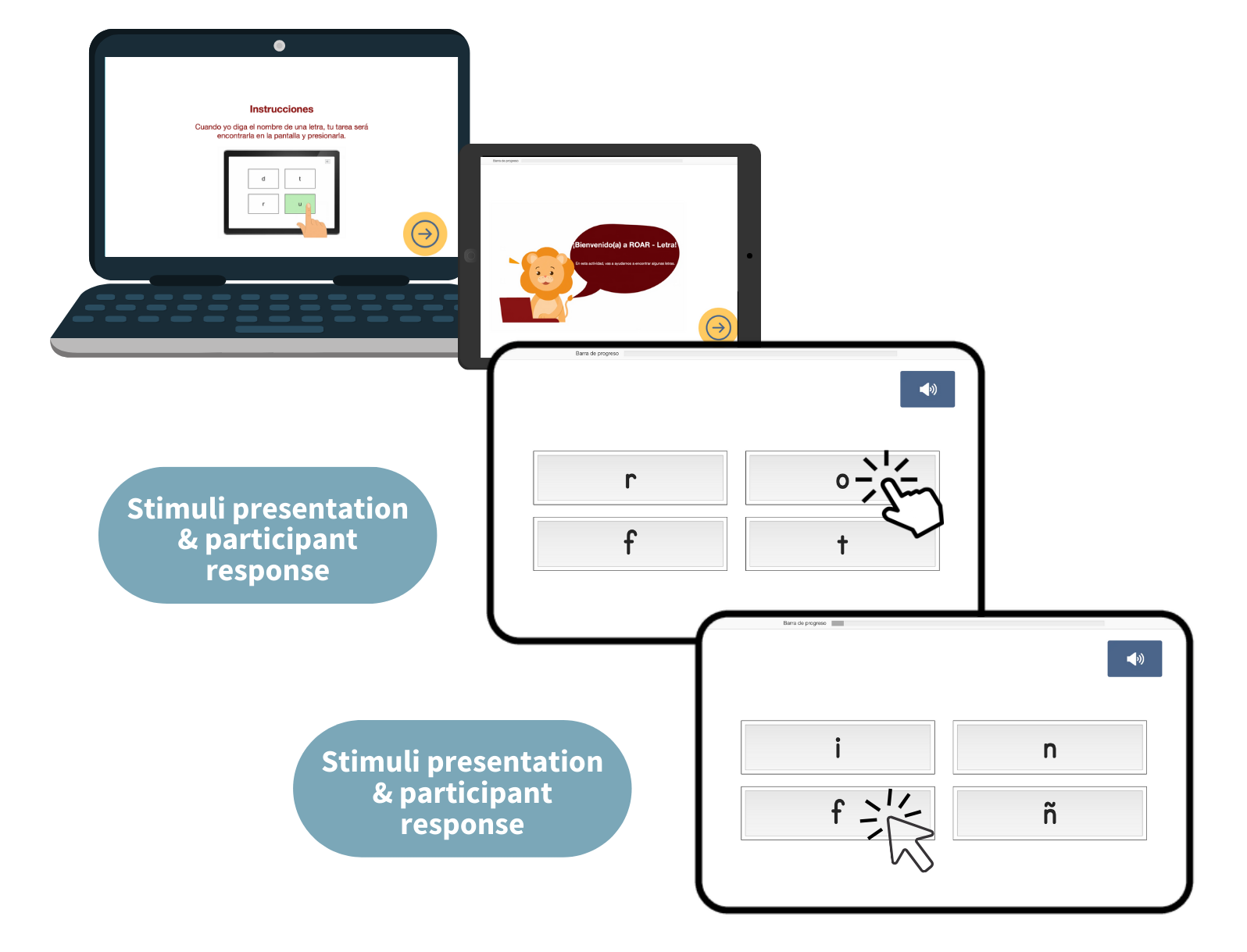14 Spanish Letter Sound Knowledge: Conocimiento de Sonidos de Letras (ROAR-Letra)
ROAR-Letra is the Spanish version of ROAR-Letter. This assessment measures knowledge of both upper-case and lower-case letter names and sounds in Spanish. ROAR-Letra has been adapted for Spanish by incorporating relevant letter names and sounds as well as adjusting distractors to be better suited for the Spanish language. ROAR-Letra can be used to assess comprehensive letter name and sound knowledge, or it can be shortened to evaluate a specific number of randomly selected items in each subskill. Additionally, ROAR-Letra can be used as a diagnostic tool to guide instruction as it returns specific information about the letter names and letter-sound correspondences that the individual student does and does not know.
14.1 Adaptation of the Task to Spanish
ROAR-Letra underwent rigorous testing through an iterative research and development process to be universally suitable for Spanish-speaking students from diverse linguistic backgrounds. Careful attention was paid to ensure the sounds and letters were understandable across different Spanish dialects by accounting for variations in pronunciation. For example, sounds like “ll” which may be pronounced differently in various dialects were chosen very carefully to ensure broad usability.
Additionally, important considerations for multilingual students were also kept in mind. For example, “x”, “h”, and “j” were not included as distractors for one another because multilingual students, who are accustomed to both English and Spanish, may have a harder time differentiating these sounds. This decision was influenced by research on multilingual children’s spelling strategies and common mistakes that multilingual learners make when spelling. Helman (2004) highlights how Spanish-speaking students leverage their understanding of the Spanish sound system when learning to spell in English, which can lead to confusion with similar-sounding letters like “h” and “j” or “v” and “b”. Zutell and Allen (1988) discuss the spelling strategies used by Spanish-speaking multilingual children and the challenges they face in distinguishing between English and Spanish phonemes that sound similar across languages. By avoiding such distractors, we aim to create an assessment that is fair and valid for English language learners.
14.2 Structure of the task
ROAR-Letra, like ROAR-Letter, is a four alternative forced choice (4AFC) task divided into 3 blocks:
- Upper-case letter names (27 items)
- Lower-case letter names (27 items)
- Letter-sound correspondences (62 items)
Like all ROAR measures, ROAR-Letra is lightly gamified. The task begins with instructions and practice trials with feedback until the student understands the game. Then, in each block, the student is presented with the name or sound of a letter and asked to select the correct letter from the four choices. The student can replay letter names or sounds if they need to. Figure 14.1 depicts ROAR-Letra.
